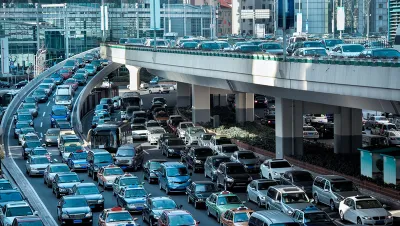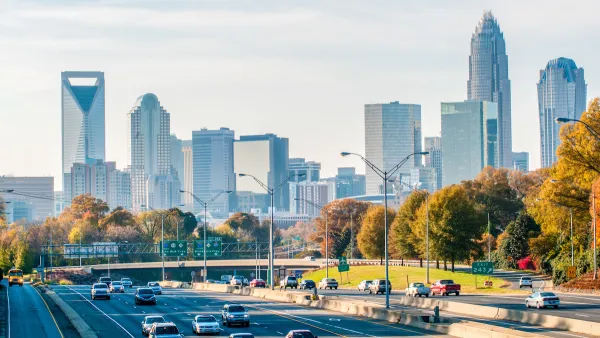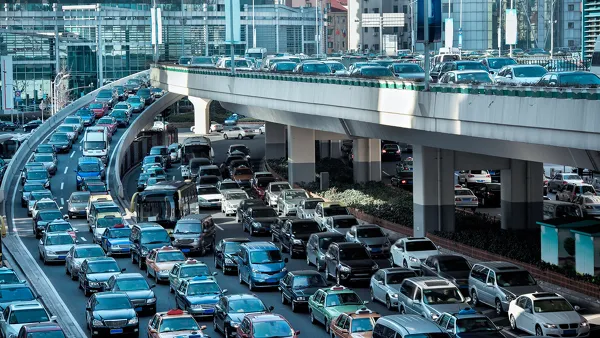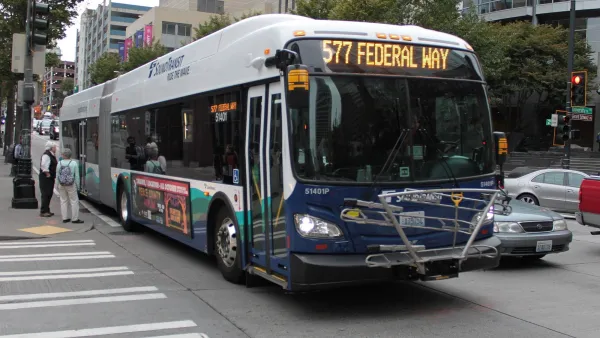The unpredictability of constantly changing commuting trends has some workers seeing much longer commute times as transportation agencies work to adjust to new travel patterns.

Despite expectations that the rise of remote work would shorten commutes—and data from the Census Bureau showing that to be, on average, true—“Experts say they are seeing traffic turmoil in many U.S. metropolitan areas, particularly those with government, tech and other jobs that lend themselves to hybrid schedules.”
As Katherine Shaver reports in the Washington Post, “Commutes now concentrated into a few days a week are causing noticeable swings in daily traffic volumes — motorists say Wednesdays are the worst — while greater flexibility in when to leave home has changed the timing of the morning rush.” According to Shaver, “Traffic at the height of rush hour feels as bad as ever in the Washington region and other large metro areas, experts say, because even a small increase tips a heavily saturated road network from free-flowing to stop-and-go.” The morning rush has been more affected by the pandemic than the evening rush hour, when more people run personal errands.
In Montgomery County, the traffic management system has been adjusting the timing of traffic lights to adapt to changing commute patterns, and Washington, D.C.’s Department of Transportation is working on an analysis of whether similar adjustments are necessary in the District. The region’s rail system, Metrorail, hit its highest ridership numbers since the pandemic began last Wednesday, but is still at only 44 percent of pre-pandemic trips.
FULL STORY: Why hybrid work schedules have made some commutes worse

National Parks Layoffs Will Cause Communities to Lose Billions
Thousands of essential park workers were laid off this week, just before the busy spring break season.

Retro-silient?: America’s First “Eco-burb,” The Woodlands Turns 50
A master-planned community north of Houston offers lessons on green infrastructure and resilient design, but falls short of its founder’s lofty affordability and walkability goals.

Delivering for America Plan Will Downgrade Mail Service in at Least 49.5 Percent of Zip Codes
Republican and Democrat lawmakers criticize the plan for its disproportionate negative impact on rural communities.

Test News Post 1
This is a summary

Test News Headline 46
Test for the image on the front page.

Balancing Bombs and Butterflies: How the National Guard Protects a Rare Species
The National Guard at Fort Indiantown Gap uses GIS technology and land management strategies to balance military training with conservation efforts, ensuring the survival of the rare eastern regal fritillary butterfly.
Urban Design for Planners 1: Software Tools
This six-course series explores essential urban design concepts using open source software and equips planners with the tools they need to participate fully in the urban design process.
Planning for Universal Design
Learn the tools for implementing Universal Design in planning regulations.
EMC Planning Group, Inc.
Planetizen
Planetizen
Mpact (formerly Rail~Volution)
Great Falls Development Authority, Inc.
HUDs Office of Policy Development and Research
NYU Wagner Graduate School of Public Service





























